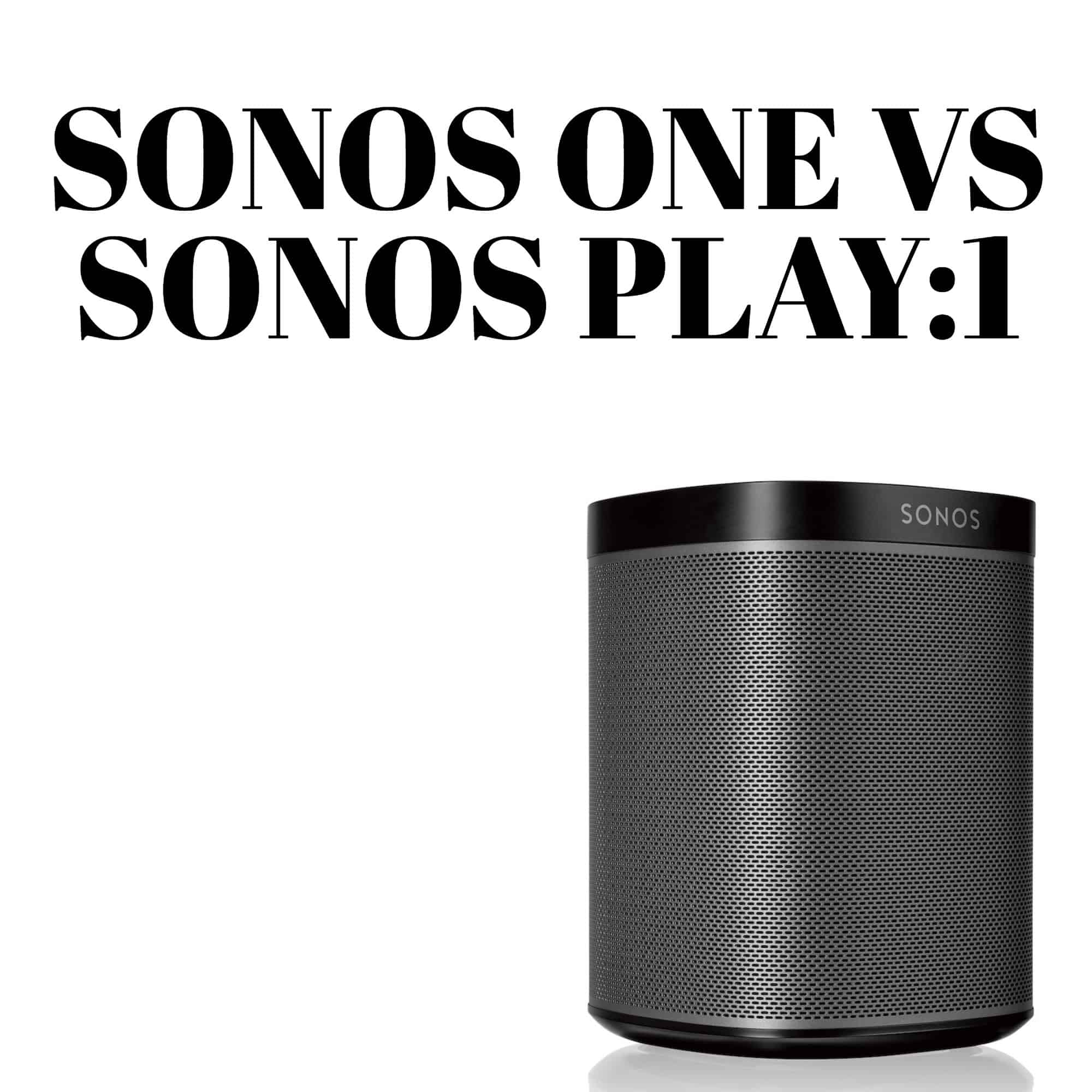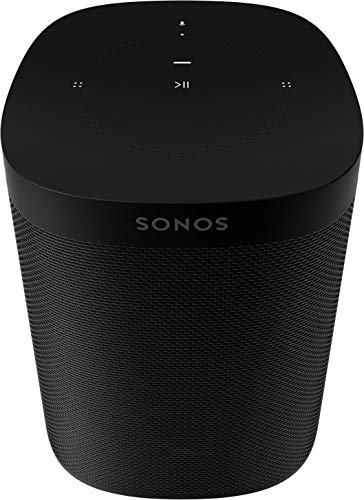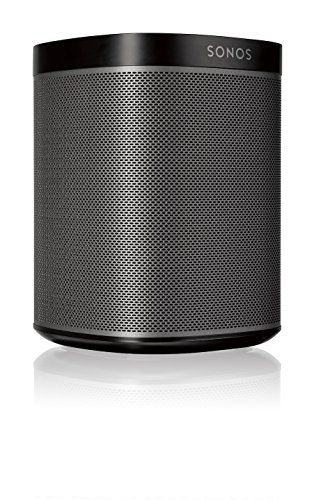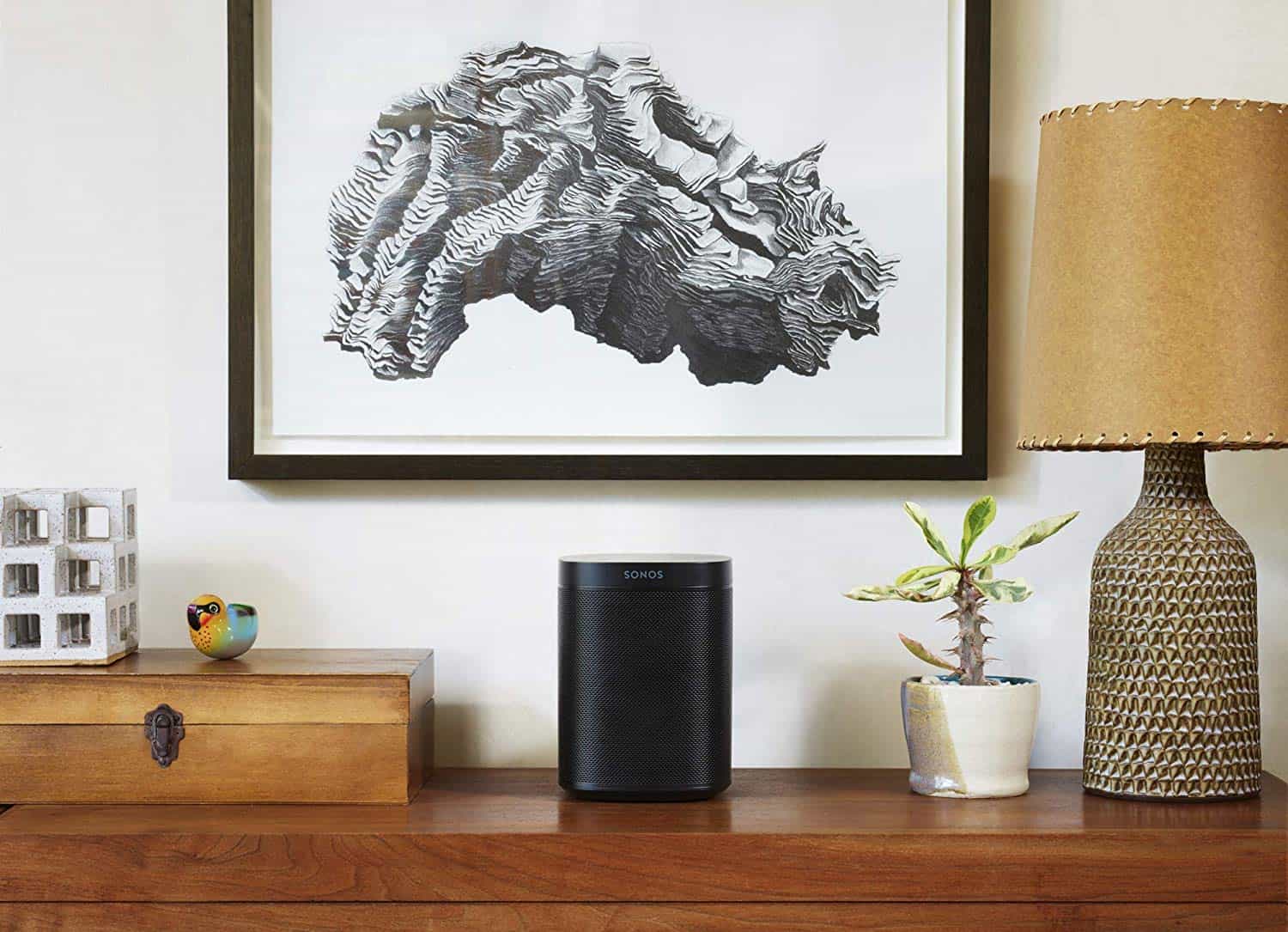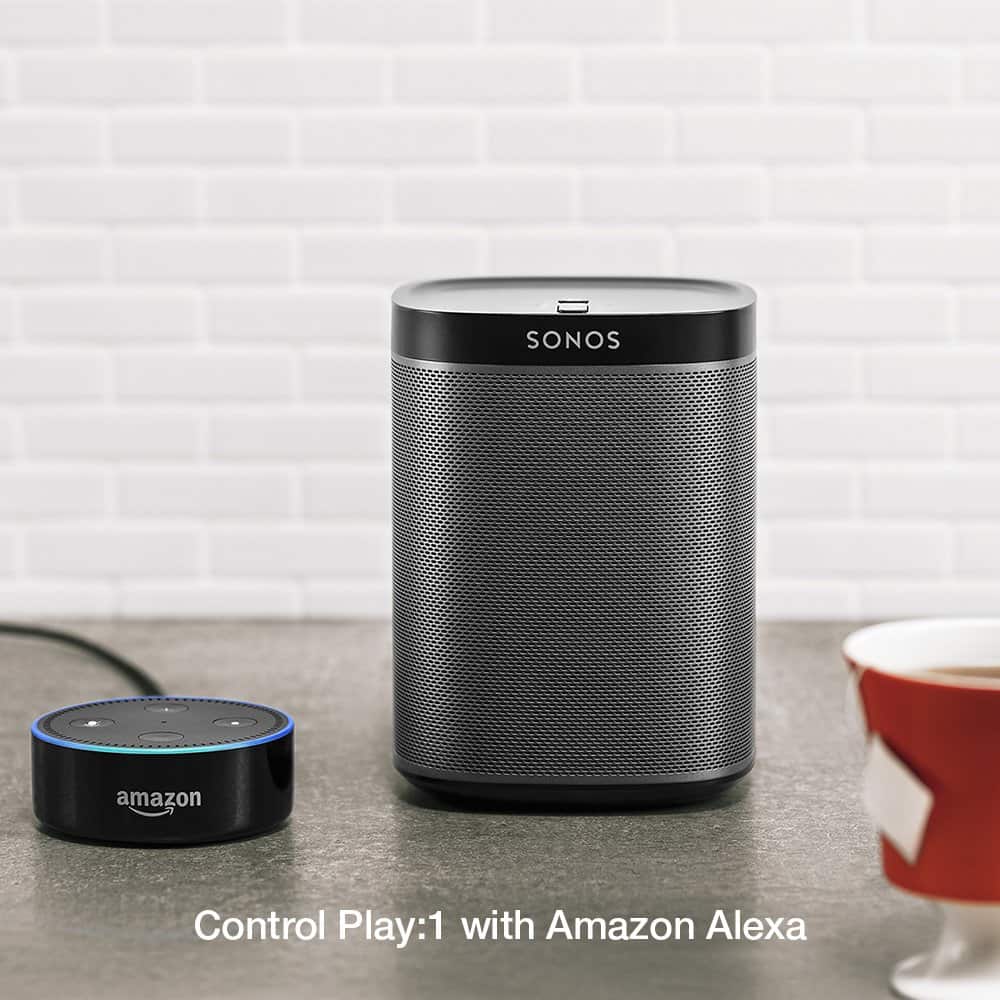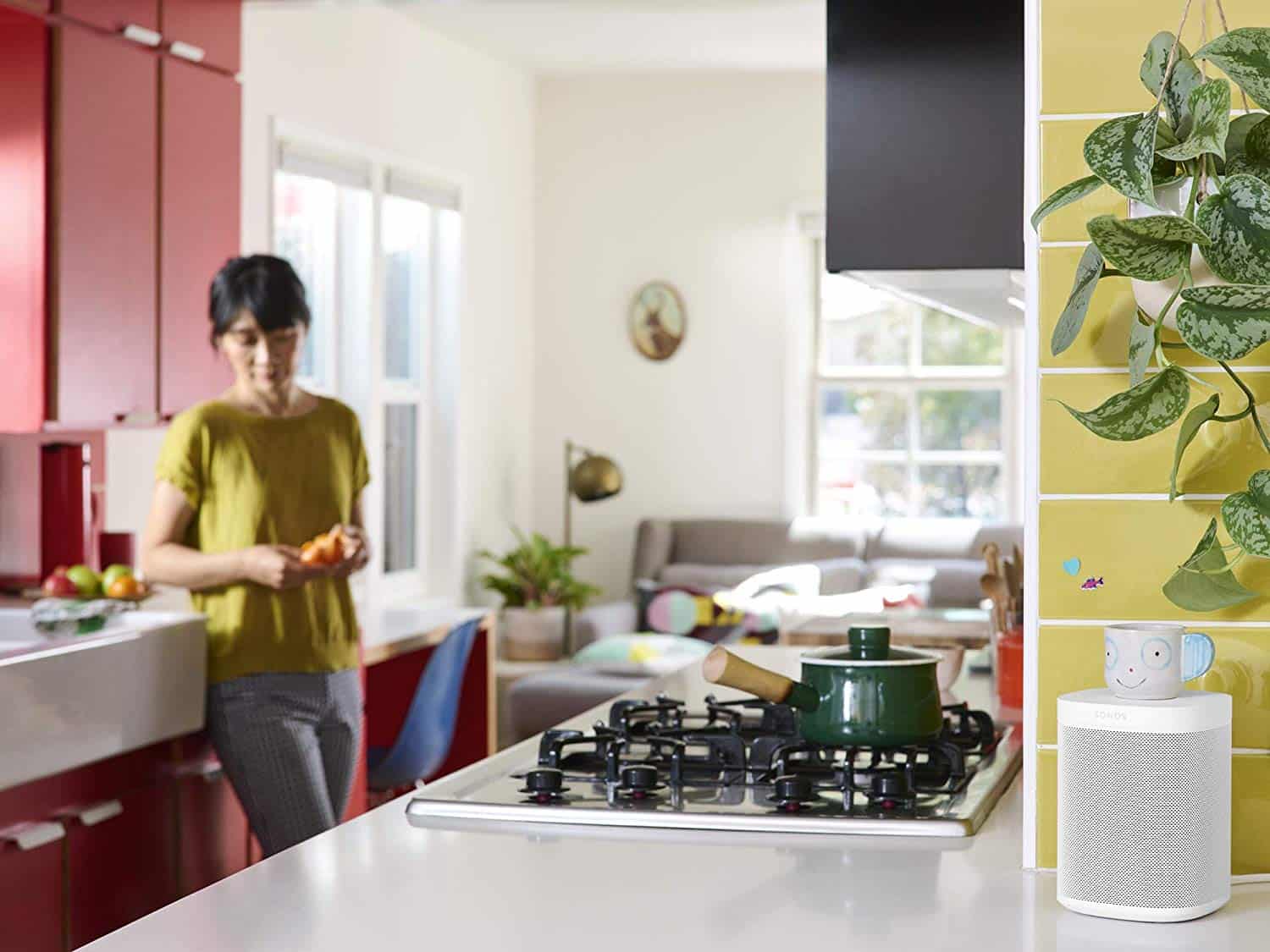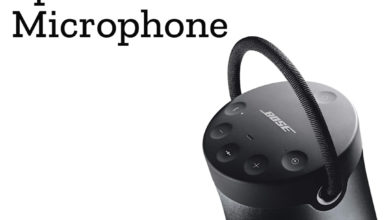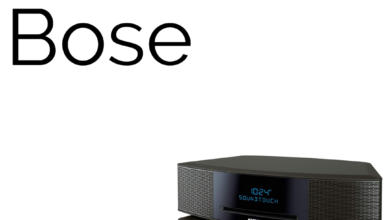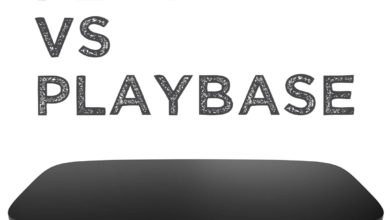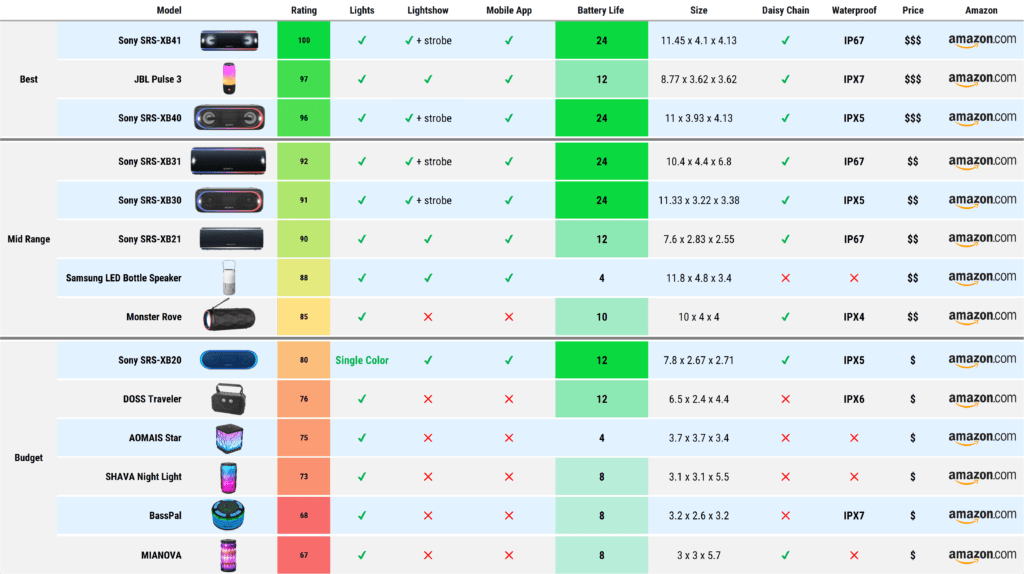Sonos One vs Play:1 - Everything You Should Know
Smart speakers really have revolutionized the home-audio market, by allowing users a more customizable experience when listening to their favorite tunes. The inclusion of things like voice control, adjustable EQ, and between-room leveling, has made the whole experience both more convenient and efficient. But with smart speakers becoming so successful, there are endless companies and manufacturers jumping on the hype, trying to get their share of the market by coming out with their own products. And with so many products out there now, it’s easy to get muddled up with them all, leaving you wondering – what speaker will work best for me?
Over the last decade, Sonos has really made a name for themselves in the home-audio market, with a growing range of products that are able to satisfy any and all of your home audio needs. This is largely down to Sonos’ wireless ecosystem that works in conjunction with the app for remote controlling of your music. This app is compatible with many of the major music streaming services, including Spotify, Apple Music, Google Play Music, and now, Amazon Alexa. But even if you’re set on using Sonos, with the range of speakers available within the company alone, it’s hard to pinpoint one alone that fits the bill. Two that stand out for us are the Sonos Play:1 and the Sonos One.
With a very similar appearance, and similar features too, it’s hard to note any clear differences between them – but they are there. The following guide will outline the differences between the Sonos One vs Sonos Play:1, and hopefully, make it easier for you to decide which is best for you.
Also Read: Bose vs Sonos Home Audio Comparison
Contents
Sonos One vs Play 1
| MODEL | Sonos One | Sonos Play:1 |
|---|---|---|
| Design | 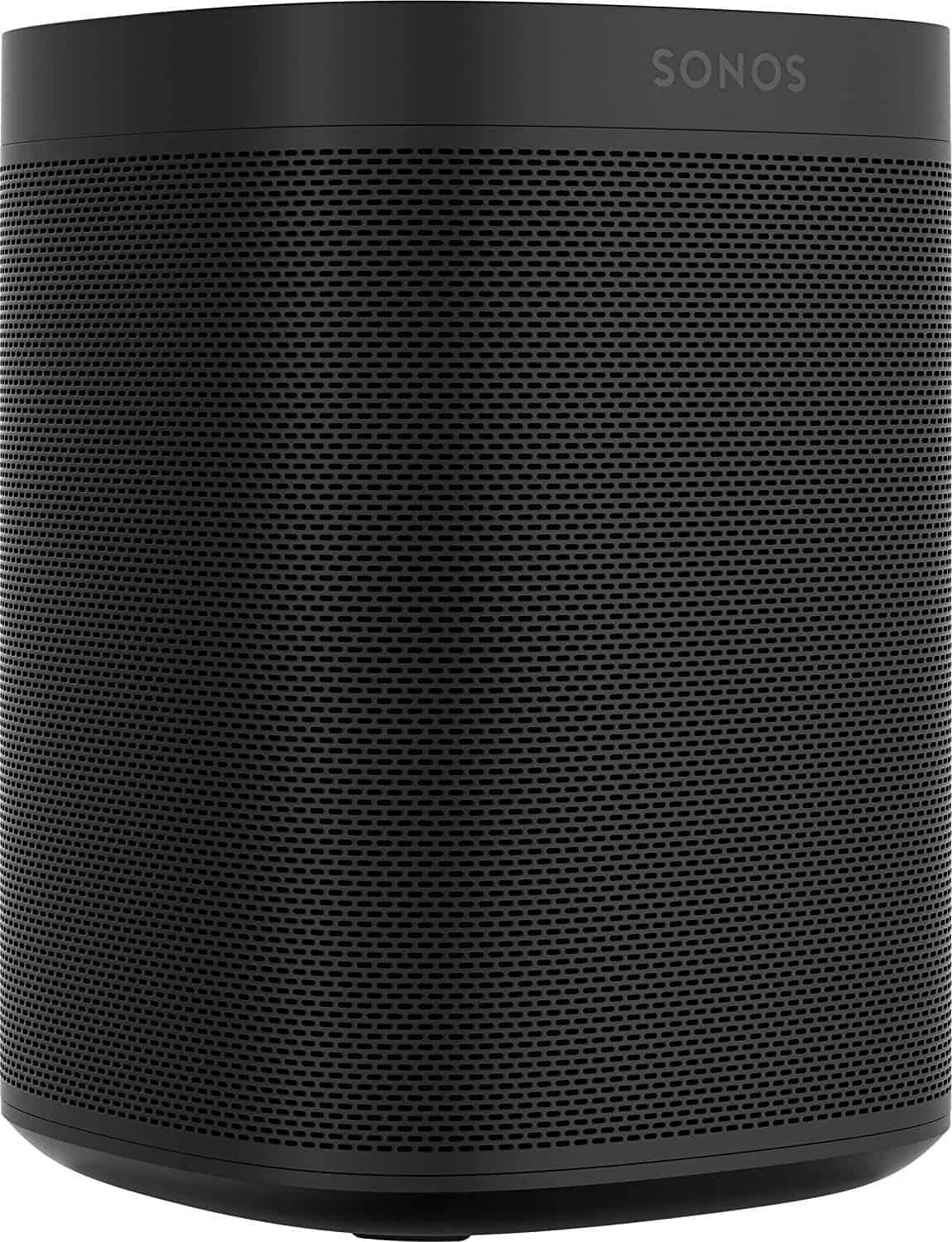 |  |
| Connectivity | WiFi Bluetooth AUX | WiFi Ethernet AUX |
| Alexa Built In | ✔ | |
| Alexa Compatible | ✔ | ✔ |
| Streaming Services | ✔ | ✔ |
| Stereo Sound | ✔ | |
| Better Sound Quality | ✔ | |
| Multi Room Music | ✔ | ✔ |
| Sonos App | ✔ | ✔ |
| Airplay 2 Compatible | ✔ | |
| Availability | Check Price | Check Price |
Sonos One
Released in October 2017, the Sonos One was a hugely successful and capable speaker by the audio giant. High quality sounds the fill a room matched with extensive online capabilities, the Sonos One is one of their most popular products. Voice control and compatibility with Apple Airplay 2, as well as the design, make it one of the best smart speakers.
- Sonos One - The powerful smart speaker with voice control built in.
- Brilliant sound - Get rich, room-filling sound with Sonos One, and control it with your...
- Voice control - Amazon Alexa is built right in so you can play music, check news, set...
Sonos Play:1
The Sonos Play:1 has been around for quite some time since 2013 in fact. This small yet powerful speaker was a favorite option for streaming music a few years ago. With the Sonos app, the Play:1 was a landmark speaker for the company thanks to pushing online boundaries and providing more versatile user experience.
- This speaker has been discontinued and replaced with the Sonos One SL speaker
The Similarities
Sonos’ sound quality is second to none – and is only matched by companies such as Bose and Sennheiser, in that it offers the best quality available on the planet. As for the Sonos One and the Sonos Play:1, in particular, both output very similar sound quality that’s near-identical in most scenarios.
1. Hardware
Each speaker contains a digital amplifier, a tweeter, and a mid-woofer – the combination of these perfectly blending crisp tones, deep basses, and everything else in the middle. The speakers also allow you to manually adjust the bass and treble, for a personalized sound experience that’s made to suit you.
2. Humidity Resistance
Delving into a few more specialized features, both the Sonos Play:1 and the Sonos ONE are humidity resistant, meaning you can play them in the bathroom, kitchen, and even outside in humid conditions. Please note, however, that this doesn’t mean they are waterproof, so please still have caution.
3. TuningSoftware
Both speakers also utilize TruePlay tuning software (available only for iOS devices), helping you optimize your speaker’s sound in relation to the size, layout, speaker placement, and even the décor in your room, by analyzing these properties, and adjusting the output appropriately.
4. Sonos App & WiFi Connectivity
As is to be expected, both speakers can also be controlled using the Sonos app, allowing you to navigate the huge range of streaming services available for Sonos devices, as well as adjust volume, skip tracks, and even play different tracks in different areas of your home. They also make use of Wi-Fi connectivity to stream their music, so provided you have an uninterrupted connection, you’ll be able to achieve consistent and reliable high-quality playback.
5. Compact Design
The Sonos ONE and Sonos Play:1 are both small enough to fit in most rooms and go unnoticed. Their compact size makes them perfect for placing on speaker stands, mounting to walls, or just playing on any flat surface available.
The Differences
This section will outline the man differences between the Sonos One and Sonos Play:1.
1. Compatibility with Amazon Alexa
Both the Sonos ONE and Sonos Play:1 allow for voice control through respective Amazon Echo devices – but only the Sonos One comes built-in with the Amazon Alexa assistant. Because of this, when it comes to the Sonos One, not only can you stream your favorite hit tunes, you can also add to your shopping list, set reminders, check on the weather, or even get the latest news headlines.
Unfortunately, however, unlike the Amazon Echo itself, the Sonos One doesn’t allow for calls or messages. Having said that, as an added bonus for those particular Alex fans, the Sonos One is the first Sonos device to integrate with Amazon’s Echo Spatial Perception, meaning that, after communicating with ‘Alexa’, only the speaker closest to you will respond. It’s a small touch, but is a great way to avoid disrupting the rest of the house.
Despite how handy many of these modern voice-activated systems can be, Sonos understands that not everyone likes the idea of being listened in on, preferring instead to utilize the main functions of their speaker. Because of this, Sonos has included an on and off indicator, allowing you to turn the microphone off when you require. Another small touch, but it’s nice to know that Sonor respects its customers’ rights to privacy.
Unfortunately for the Sonos Play:1, it doesn’t have integrated voice control, but users can still link it up to their Amazon Echo or Amazon Echo Dot to make use of this.
2. AirPlay 2
AirPlay 2 allows users to ‘throw’ the audio from their other devices – such as phones, tablets, and computers – straight into their Sonos speakers, transferring the audio from your music, films, or podcasts onto your speaker in an instant.
The Sonos One will be integrating AirPlay 2 in the near future, but unfortunately for the Sonos Play:1, this won’t be the case, due to not having quite the processing power required. But if you get your hands on any of the other Airplay-compatible speakers, this can communicate between your devices, allowing you to use AirPlay 2 for the whole system.
3. On-Device Control
As well as voice control, and control via the Sonos app, both the Sonos Play:1 and Sonos One speakers also allow for on-device control – the Sonos Play:1 using physical buttons, whilst the Sonos One using touch buttons.
Both devices allow you to use these buttons for pausing/playing audio, adjusting volume, skipping tracks (or episodes, for podcasts), and muting or unmuting the microphone. Although both devices do this well, the Sonos One’s buttons have more of a sleek and stylish appearance, due to them being touch-activated.
Things to Look for When Choosing Between Sonos One vs Play:1
Here are the main factors you should consider when making your choice between the Sonos One and Play:1.
1. Features
Sonos takes great pride in the features of all of their speakers, in order to maximize the user experience, both in and beyond the music. There is a range of features that both speakers offer, as well as a few minor differences too.
Both the Sonos One and Sonos Play:1 are able to work independently, or in part of an existing Sonos setup, seamlessly integrated themselves together to provide audio all-around your home. As mentioned earlier, both speakers can also emit stereo audio, provided they’re paired with another speaker of the same model.
They can also be linked together with any of Sonos’ subwoofers, to add bass to their existing audio. With TruePlay compatibility, both speakers can be tuned and tweaked to match their surroundings, to provide the most suitable audio output to any specific room – though TruePlay is only available on iOS.
The differences between these speakers become apparent when it comes to voice control, as only the Sonos One has this integrated within the device itself, allowing you to pause/play, skip tracks, or adjust the volume via your command.
Although the Sonos Play:1 doesn’t have voice control integrated as standard, by syncing it with your Amazon Alexa or Google Assistant, voice control with your Sonos Play:1 can be achieved through either of these devices.
2. Design
As both speakers are made by Sonos, and share a wide array of features and purposes, it goes without saying that both speakers sport quite a similar design. Many claim, in fact, that the Sonos One is a ‘pimped out’ version of the Sonos Play:1, but makes use of some of the more advanced technology that has been developed since the Sonos Play:1 was originally released back in 2013.

Starting with their physical appearance – both speakers are virtually the same size and shape, so where one is able to fit, the other is guaranteed to as well. The only difference here is with the Sonos Play:1’s built-in mounting hole, allowing it to be attached to a slightly wider range of compatible speaker stands and brackets than the Sonos One.
Another design difference is the buttons as – as mentioned before – the Sonos One has built-in touch-sensitive controls, whilst the Sonos Play:1 has physical buttons instead. Although there isn’t much difference between these two designs, most users claim that the Sonos One’s touch-button design looks more aesthetic, and helps them blend in with the speaker for an overall cleaner appearance. Another variation in design that’s worth mentioning is the speaker grille, designed to protect the speakers’ drivers.
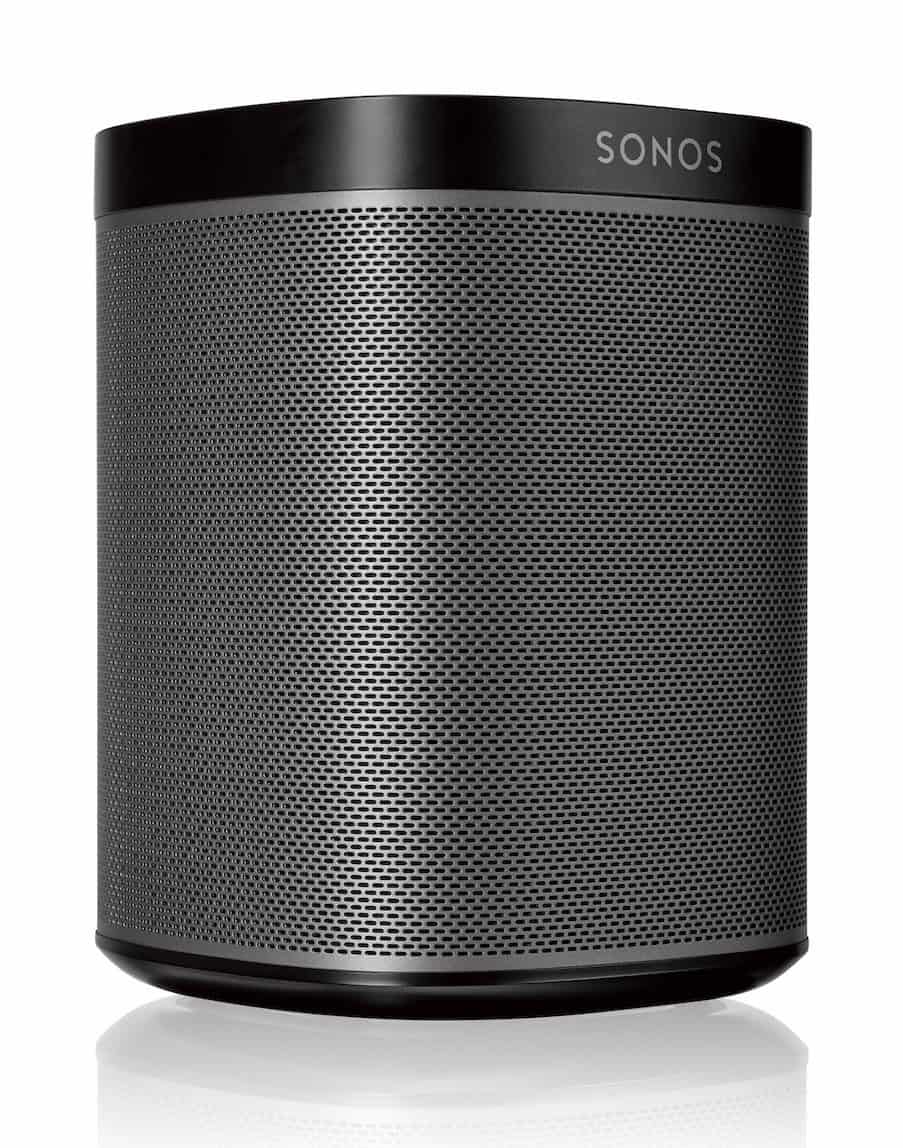
The Sonos Play:1’s speaker grille is a brushed, stainless metal, whether you buy the white or black version. As for the Sonos One, the speaker grille on this device matches the color of the speaker itself (i.e. a black speaker will have a black grille, and a white speaker will have a white grille), giving it a less intrusive appearance.
A few things worth mentioning is that both speakers are moisture and humidity resistant, allowing them to be used in humid rooms, like bathrooms and kitchens, without issues – though this doesn’t make them waterproof. For us, the speakers are pretty even in their design, though the Sonos Play:1 may be the more suitable option if you’re hoping to mount your speaker on a wall bracket or a stand.
3. Hardware
As is to be expected from a Sonos product, the hardware within these speakers is top of the range. And with the Sonos One and Sonos Play:1 being virtually identical, the hardware used is almost-identical (if not actually identical) as well.
With a Class-D amp, a tweeter and mid-woofer, the sound potential from these speakers is immense. The same goes for the microphone, and any minor hardware (such as indicator lights and buttons) – all are of a high quality, and all achieve the basics well.
Neither speakers are Bluetooth compatible, as Sonos prefers its own connectivity system, and both are Wi-Fi enabled to allow streaming directly from online music providers – such as Spotify, Google Play Music, and Apple Music.
4. Sound Quality
Sonos as a company doesn’t seem too keen to reveal the technical aspects of their products, and as such, doesn’t say too much about the specs, such as frequency response and wattage, making them virtually impossible to compare against other speakers.
The only way to make a direct comparison is by listening to the sound in person – which isn’t such a bad thing, as that’s the only surefire way of knowing what the sound quality is really like. As for the Sonos Play:1 and Sonos One, it’s clear that, like other components within these speakers, they have an almost-identical construction, and therefore output almost-identical sound.
Only listening to them side-by-side is it possible to reveal the very subtle differences between them. The Sonos One sounds a tiny bit more full-bodied in its output, but again, this difference is barely noticeable, even to a well-trained ear.
The most important thing to know is that they’re basically equal in sound quality – both sound fantastic, whether playing music, film audio, podcasts, or anything else, and it’s unlikely that either will cause some sort of disappointment.
5. Price
Sonos has never been known for its low prices, as the brand has built a name for itself by offering high-quality products. It’s no surprise that this is reflected in the prices for both the Sonos One and Sonos Play:1.
The Sonos One retails at around $200, depending on where you get it from, but the Sonos Play:1 is 25% cheaper at around $150. So, unless there’s something particular about the Sonos One that’s caught your attention, save yourself 50 bucks and go for the Sonos Play:1 instead.
A bit about Sonos
Sonos as a brand has built a reputation for the rich, bold and detailed sound quality that its products offer. As well as this, the company designs its products to integrate well with one another, so users can slowly grow their home speaker setup one-by-one. Sonos has always aimed to create a seamless home-audio service, and as such, its products offer continuous streaming of any songs, playlists, and even podcasts and audiobooks – whatever you want.
You can even browse for your favorite music within the Sonos app itself, as it has over 50 music partners, from which it has collated its large library. As well as music itself, provided you have enough speakers, Sonos allows for a complete 5.1 surround-sound setup, allowing you to recreate all of the epic audio from your favorite hit shows and blockbuster bangers – and all wirelessly too!
As for the speakers in question (i.e. our Sonor One vs Play 1 debate), Sonos One and Sonos Play:1 both output mono audio when acting alone – but by pairing them with a second of the same model, you can achieve a stereo output too (i.e. having two Sonos Ones or 2 Sonos Play:1’s – not one Sonos One and one Sonos Play:1.
If you’re willing to sacrifice stereo audio for mono, you can of course sync either of these speakers with any other Sonos speaker, for enhanced audio power. And if you’re looking for extra bass, you can always add a Sonos subwoofer to the setup.
Final Word
Both the Sonos One and Sonos Play:1 are excellent speakers with a high-quality, competent and reliable sound. Being made by Sonos, they’re made with premium materials, and components, and come with a range of added features. Each some use of smart technology, with – either integrated or when synced up to other devices – voice-activation and control as well, for that added convenience around your home. And with on-device controls too, you get the best of both worlds.
Sonos has partnerships with a huge range of music and audio providers, meaning that navigating these platforms through your device is a piece of cake. Both can be placed on any flat surface, or for those wanting a more personalized setup, can be mounted to walls or speaker stands, to complete that professional look. And if you own any Sonos product already, syncing either of these great speakers with your already-existing setup truly is a breeze. All in all, two excellent speakers that are perfect for the casual music listener, avid Netflix fan, or podcast enthusiast – or just great to fill each room with some banging tunes. Whichever one you settle for, you won’t be disappointed!
